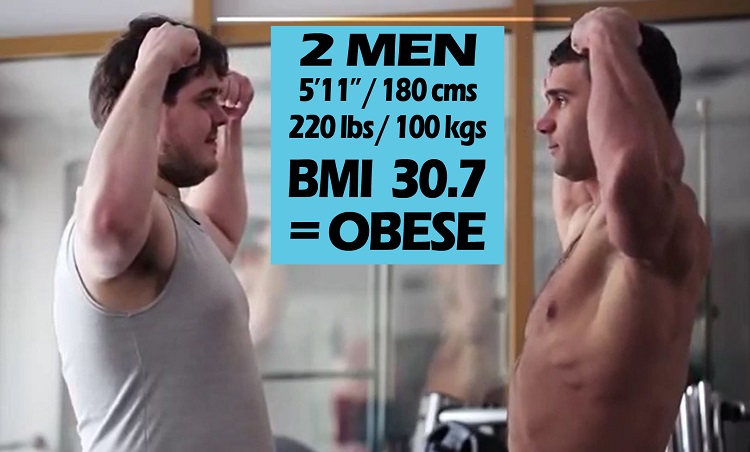The BMI Calculator has been used for years to measure health. However, BMI is not a conclusive measurement and can often be very misleading. Understanding how to measure your health and wellness is crucial for a sustainable, healthy lifestyle.
Forget about using a BMI Calculator! Achieving your perfect body shape is ALL About Body Composition Improvement.
Typically, most of us use a scale to track weight and assess our progress. But, too often, successful dieting and fitness programs are sabotaged because the scale doesn’t tell you what’s really happening in your body. A scale can only tell how much you weigh; it can’t tell you how much of that weight is muscle mass, fat mass, bone mass or water weight.
The simple tape measure is a tool that is much more helpful than the scale or the common BMI Calculator for assessing one’s health. Here’s why:
Most people don’t realize that muscle weighs 20% more than fat per cm. While muscle is lean, fat is bulky and therefore takes up much more space per KG.
Imagine that you have two men, same age, same height say 5 foot 11 or approximately 180 cm and they each weigh 220lbs or approximately 100 kg, they will both have EXACTLY the same BMI which would be 30.7. A BMI Calculator will say both men are obese, the man on the right however, has a very healthy Body Composition with say only 5% body fat and the man on the left is a typical overweight man!

A BMI Calculator is simply not a viable measurement of body composition or the true percentage of body fat. Having the healthiest body composition should be everybody’s goal – NOT weight loss. You want the majority of your body to have lean tissue and muscle with a low percentage of fat along with strong healthy bones.
When someone says they want to lose weight, what they really want is to get slimmer, leaner and feel healthier. On a typical weight loss plan you may think that the extra weight on your scales is just fat but it also includes vital muscle mass. If you lose more muscle than fat that’s not a good thing. Muscle is metabolically active whereas fat is not.
Going back to our example of two men both with identical BMIs, the bodybuilder obviously has a lot healthier body composition and the more muscle mass you have the easier it is to maintain that healthy body composition.
On a truly successful fat loss plan the average person should lose some scale weight in the beginning and then plateau and find that as they continue to increase or sustain muscle mass while losing fat mass their scale weight and when using a BMI Calculator their BMI will even go up!
We need to take the scales and literally throw them in the trash!
We need to NOT focus on measuring weight – the world needs to forget about the outdated paradigms of weight loss, scale weight and BMI. We need to be thinking in terms of FAT LOSS and Body Composition Improvement not weight-loss.
A BMI Calculator will simply calculate the ratio of scale weight to your height and since it is highly unlikely that your height will change during the course of your weight loss programme, BMI is simply another way to describe your scale weight and since scale weight cannot possibly tell you what percentage is fat, muscle or bone, it is not an effective way to measure the success of your diet program.
Instead the Body Composition Index (BCI), which measures the percentage of total body fat, muscle and bone, is a much better way to indicate a person’s true health. Body Composition Improvement should always be the goal.
Always remember an important part of true health begins with a healthy body composition. As your body fat-to-lean ratio decreases, so do your health risks.
That’s great news!
To learn much more, watch the video and get your free guide at http://NewWayToLoseWeightFast.com

